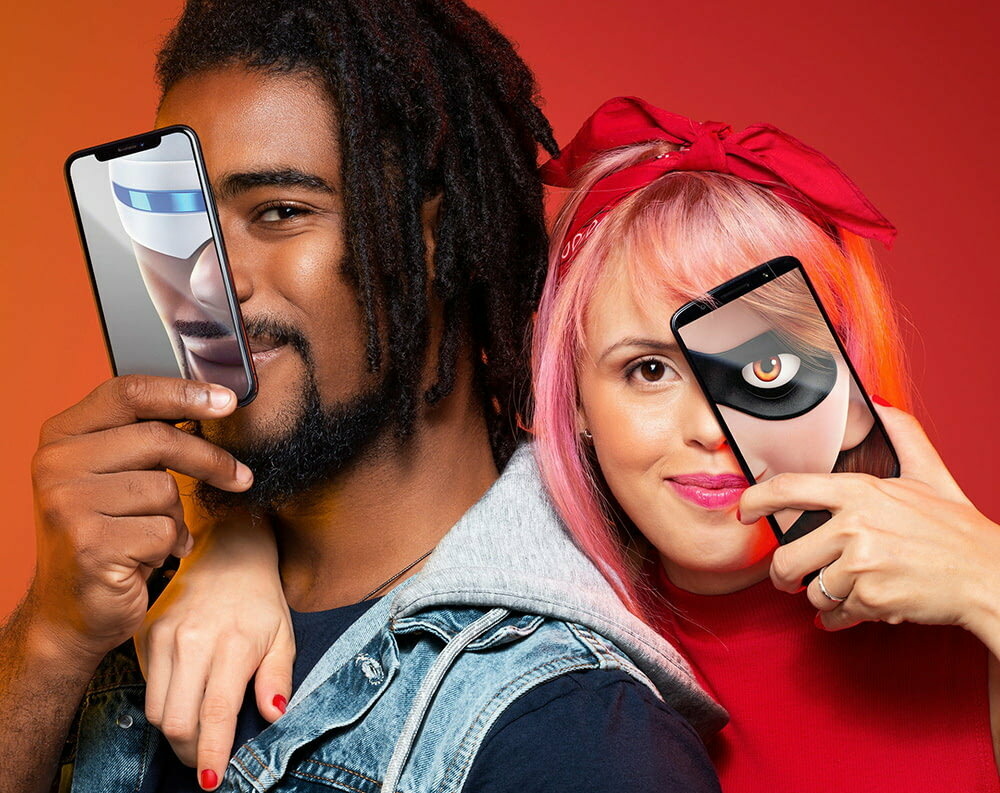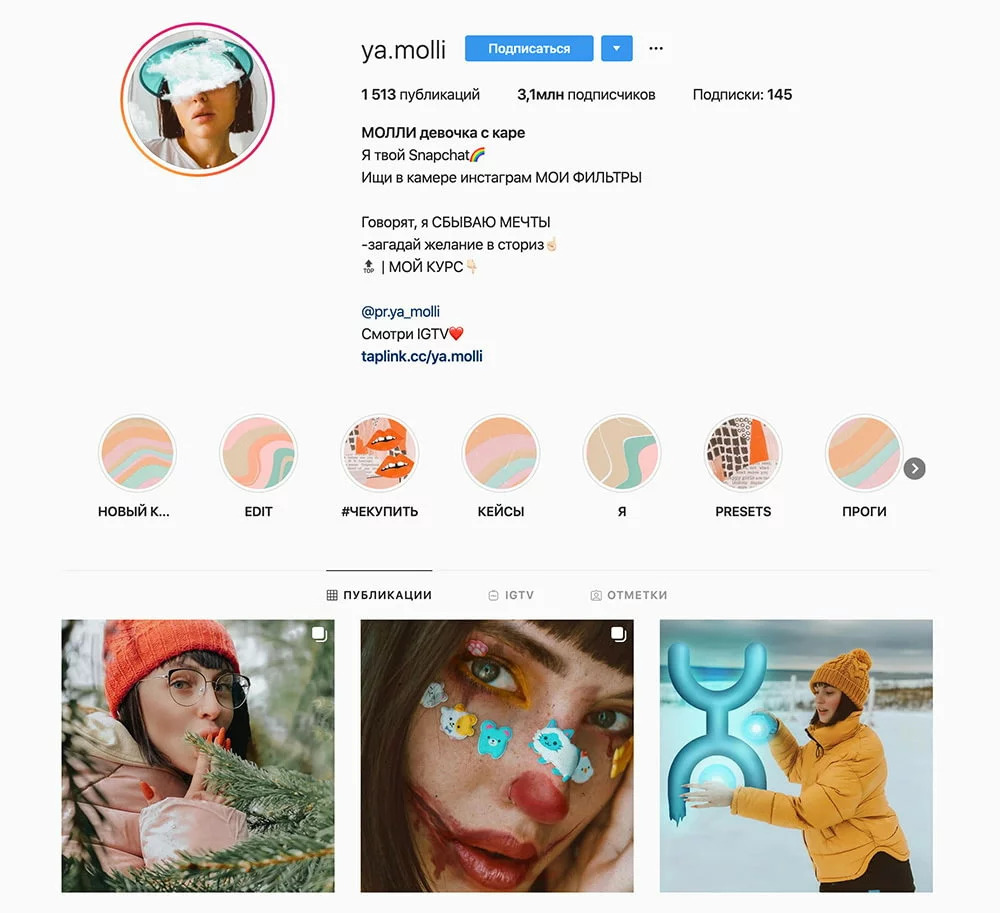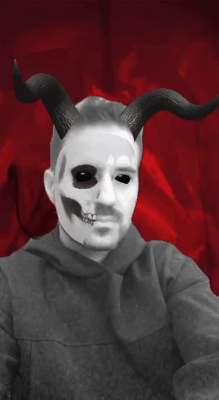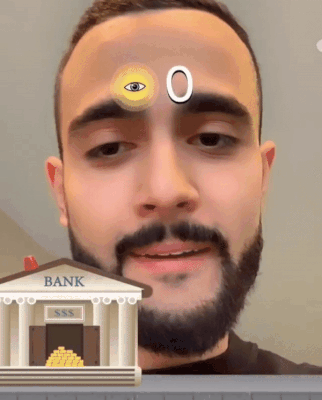
I will not take into account that all this movement originated in the bowels of Snapchat, but it is Facebook that will make this technology massive.
Background to the creation of Spark AR

Spark AR was born thanks to the Belarusian team MSQRD, which a few years ago became sensational with their application. Facebook bought them at the time. Already inside the corporation, the team worked to integrate its technology into FB products. The result of this work was the Spark AR platform itself.
***
Have you heard about people who, on masks on Instagram, raised several million subscribers in a few months? The train of this trend is already accelerating. And now there is a chance to jump into it 2D and 3D designers, JavaScript programmers, illustrators and all those associated with digital art. All these people within the platform are united by one term - AR creators. What requirements and knowledge are needed to become one?
I will broadcast only my experience and try to clarify what is happening now.
What is Spark AR?

sparkar.facebook.com/ar-studio
This is a platform that allows anyone without special knowledge and skills to make their mask. This is exactly how Spark AR began to vie with many video bloggers after its release from beta. But without any experience in the digital industry, you can make the most of a tattoo mask:

“The times of banal masks are passing away. Now in the AR industry receive unique and creative ideas. And this is where the skills of experienced designers are needed. ”

Posted by Omega.C
Why do we need masks?
The answer is simple - this is a new and not yet popular marketing tool that allows you to increase the number of subscribers, and for brands, loyalty and engagement of the audience (for creators themselves, it’s also free).
You can gather your audience for years, post quality content, do collaborations, but not reach the numbers and 10 thousand subscribers. Creators in 1 month reach figures of 50-100 thousand. And the most successful collect millions.
Do you know any other free and so effective ways to promote?
The most striking examples in Russia:
ya.molli
3.2 million subscribers
Before using masks - 200 thousand.

I took a comment from Molly:
As a rule, I only create filters and now I have more than 35 billion impressions. Recently, more and more people are subscribing to my masks. I make filters based on something recognizable. For example, I created a filter that simulates 8 mm film. They brought a lot of foreign audiences and allowed me to enter the international market in terms of cooperation.
dvoshansky
4.5 million subscribers
Before using masks - less than 1000

Advancement through masks has a minus, about which I must warn you. The audience can turn out to be very spread all over the world, unexpectedly a lot of people from Indonesia or Brazil can subscribe to you, which is difficult to monetize from Russia. You just have to understand this risk.
Skills to create a mask
Now there is the following division of masks by type: 2D, 3D and games.
2D masks
To create the simplest 2D mask, you need to have basic Photoshop skills. All you need is to draw a texture and load it into the mesh faces in the pair. There are already plenty of lessons to create such masks.
But the mask can be dynamic, and this is the territory of motion-designers:

Average cost:
$ 200-300
Necessary skills:
- Photoshop for static masks
- After Effect for dynamic masks (or other software for creating 2d animation)
3D masks
If for you terms like pivot, normal map and UV-scan do not seem to be unknown, then a new level will open for you and the space for creativity will expand to infinity.
habrastorage.org/webt/ri/pl/1l/ripl1ls3fu58ee0_kqacsahacxw.gif
It uses a LUT filter to invert colors and a 3D jaw that tracks to the face
Mastering 3D modeling is unlikely to be quickly fast, therefore, all those who tolerate 3D software will feel comfortable here.
It is impossible to import 3D animation into the spark based on changing the mesh of the object, but you can use rigging and thus create character animation or any other movement based on bones. The movement of the bones can be programmed inside the spark. And this opens up great scope for creativity for professionals.
Average cost:
from $ 500
Necessary skills:
- Photoshop for static masks
- Modeling, texturing, rigging in any 3D software
At the output, you should have a file fbx, obj, dae, which is easily imported into the spark.
About texturing.
There are 6 types of textures: Flat, Standart, Phisically-Based, Face Paint, Blended, Retouching.
Standart and Phisically-Based provide the most features. They have texture maps: Normal map, Specular, Emission Map, Alpha. Phisically-Based also has an Environment map.
Retouching can only smooth the skin of the face. Essentially, she applies Blur to her facial skin. Strength is customizable.
Example of my 3D masks:

Posted by Siberian_creator

Posted by Siberian_creator
To try
Games
This is the domain of JavaScript developers. This programming language is used in Spark AR. In general, the simplest animation can be done without any special knowledge - in the spark, the principles of visual programming are used and armed with lessons from the network and remembering the math, you can assemble a simple animation.

On Instagram, you can create games based on facial expressions and facial movements of a person.
Spark reads these parameters from the face:
- Blinking (boolean)
- Lowering eyebrows (boolean)
- Eyebrow Raise (boolean)
- Happy face (boolean) (facebook only)
- Nod of the head (boolean)
- Head Turn (boolean)
- Kiss (facebook only)
- Left eye closed (boolean)
- Right eye closed (boolean)
- Mouth open (boolean + opening force value from 0 to 1)
- Smile (boolean)
- Surprised Face (boolean) (facebook only)
Game example:

Character jumps at the moment of blinking
You can create an animation attached to a plane using the plane tracker. Now it works only on Facebook.
You can interact with objects and animations with standard phone gestures: tap, long tap, swipe.
Average cost:
from $ 3000
Necessary skills:
JavaScript knowledge
Moderation of masks
The last thing I would like to discuss is moderation. Every month, the nuts tighten. Since Facebook is not a small startup, this imposes restrictions on the layout of different masks on its site.
More recently, it was possible to lay out masks with a deformed face (for example, with big eyes), now this will not work.
From my own experience I can say that the most common reason masks do not claim is static text. I tried to approve such a mask for 2 months, changing various parameters, and proving to the moderator that static text here is a key visual element. But it looks like this mask will never see the light of day:

The terms of moderation of the masks are 7 working days, but sometimes it drags on for 10 or more. Be prepared for this.
I created a telegram group to publish orders and discuss issues related to the development of masks.
Thanks for attention.
I will be glad if you tell about your experience in Spark AR in the comments.